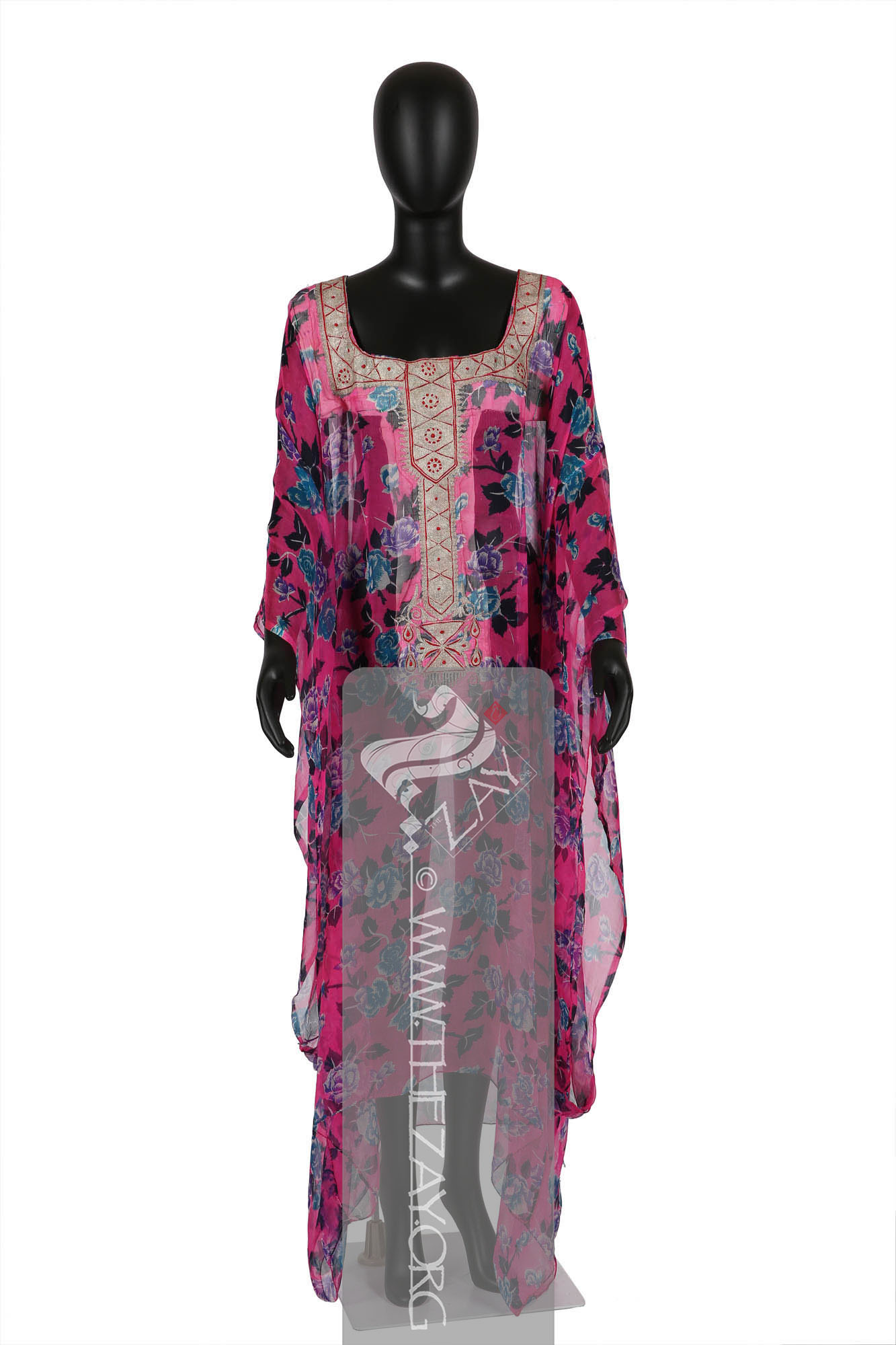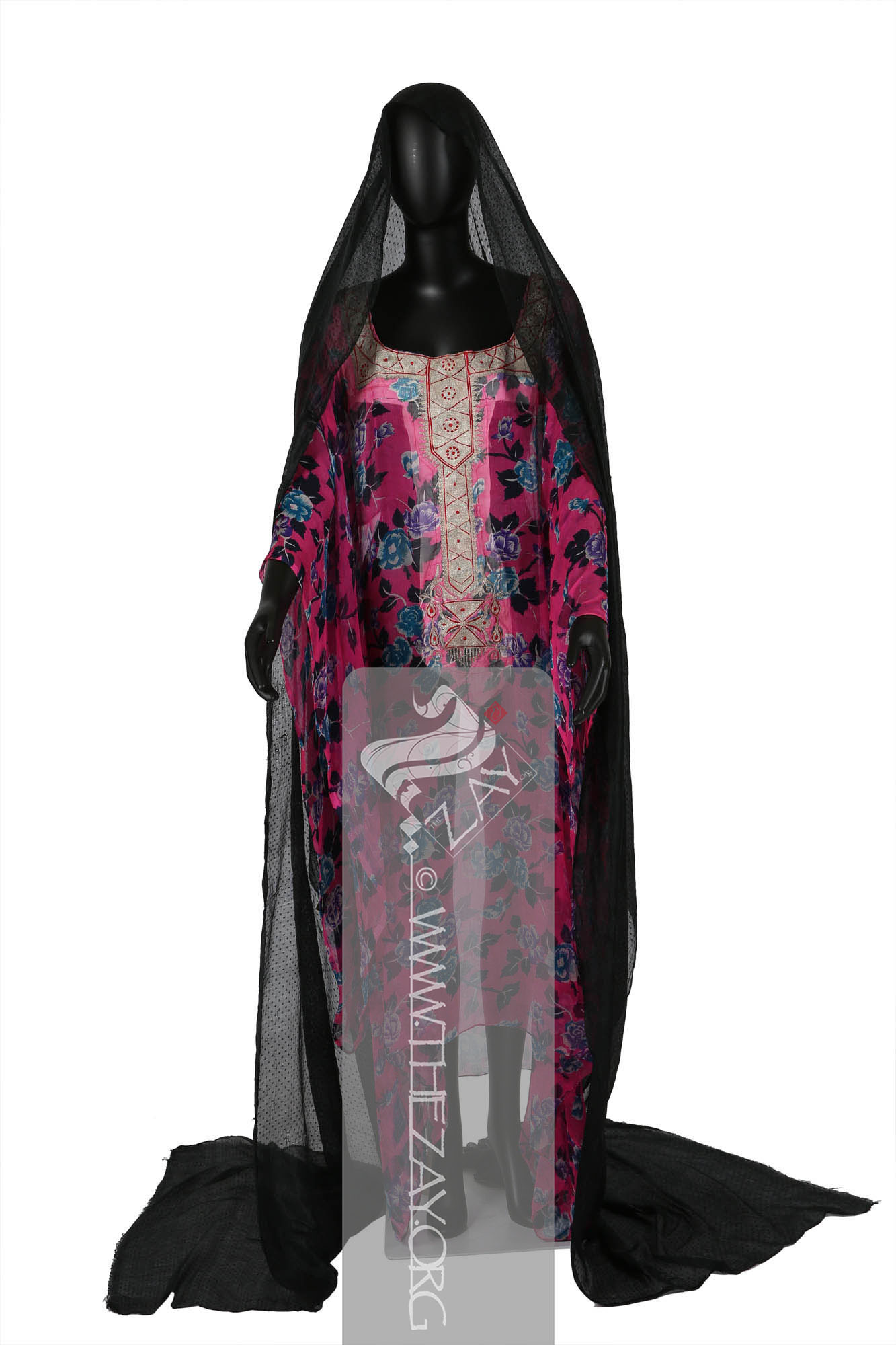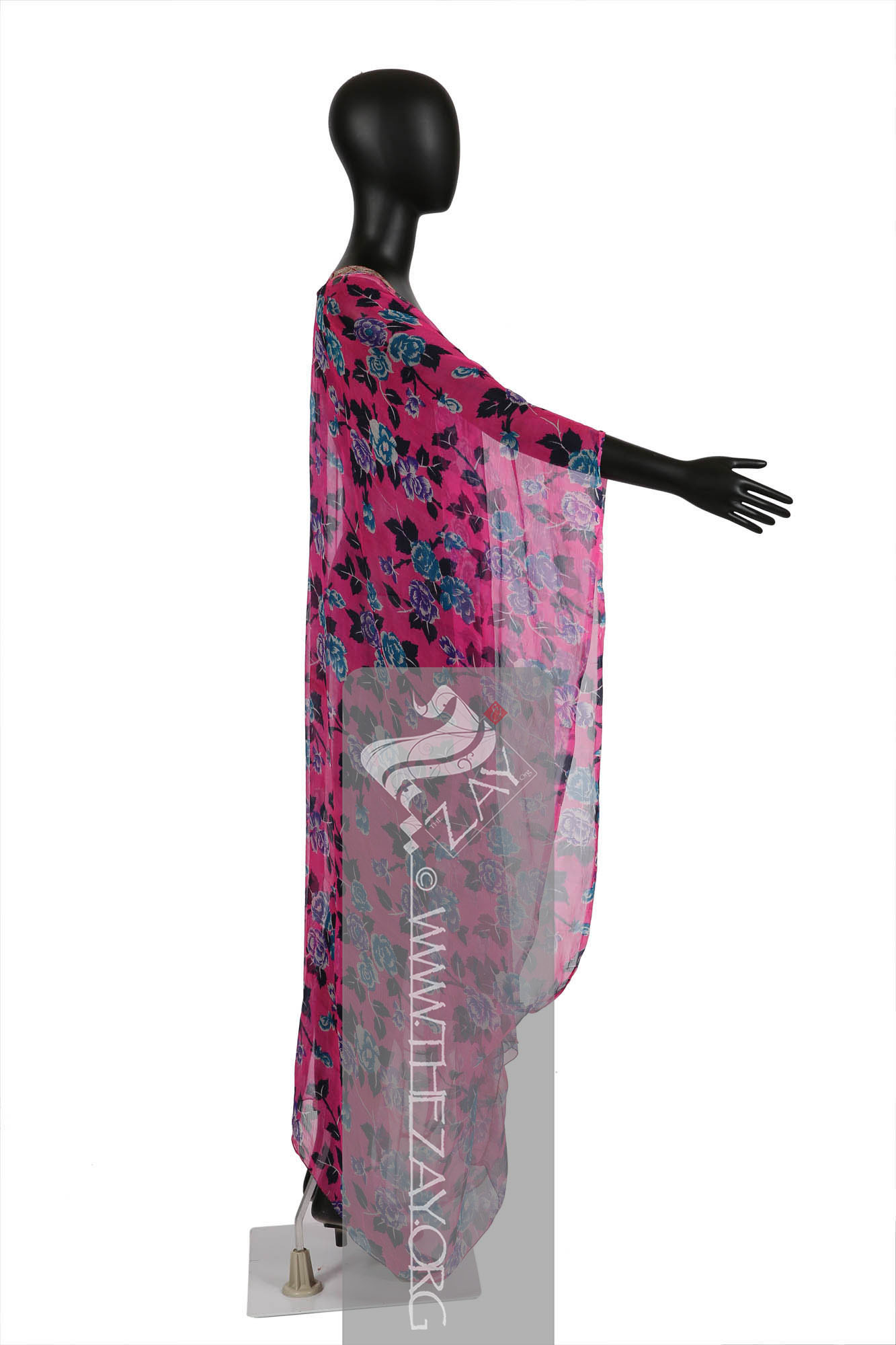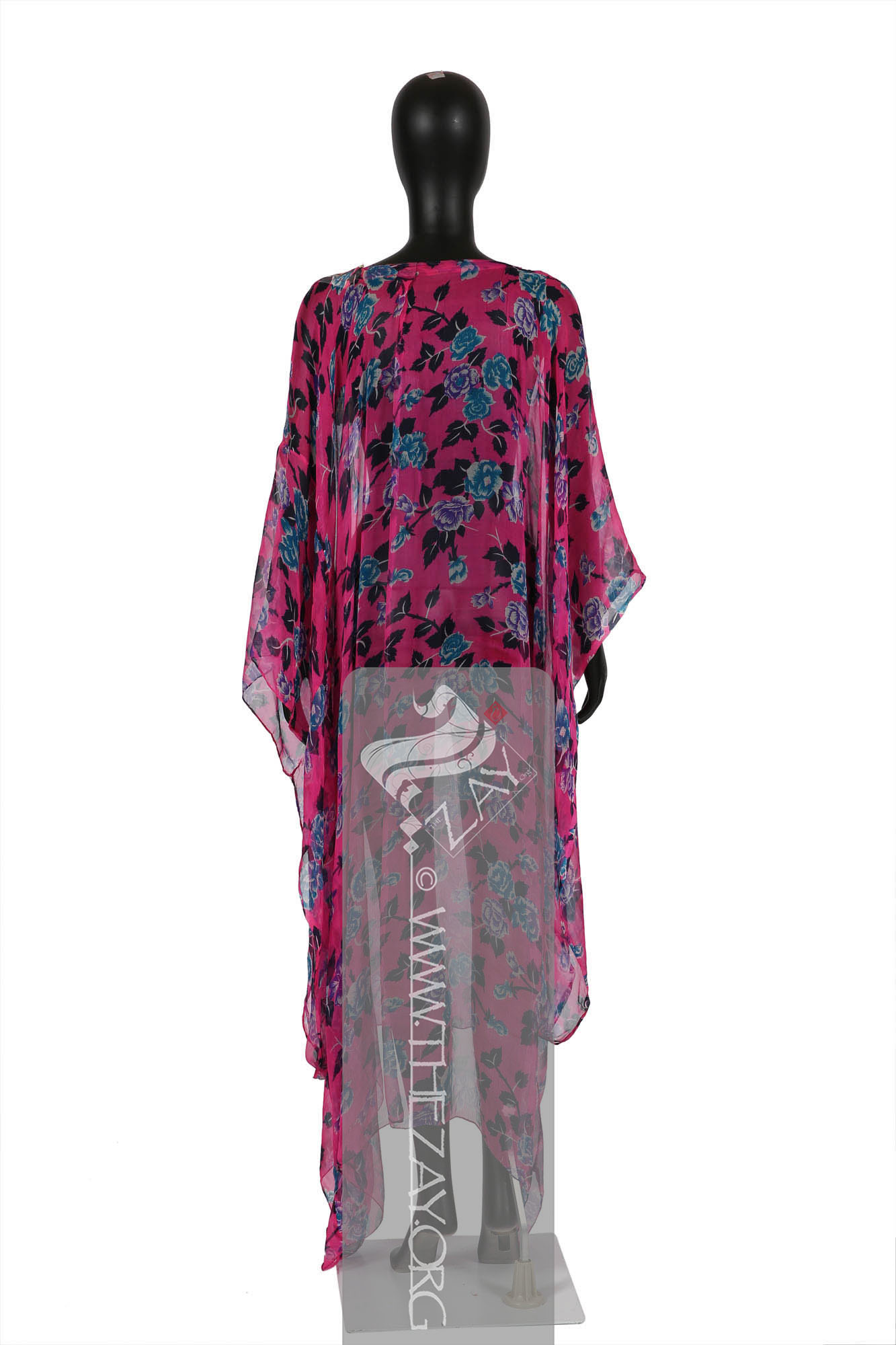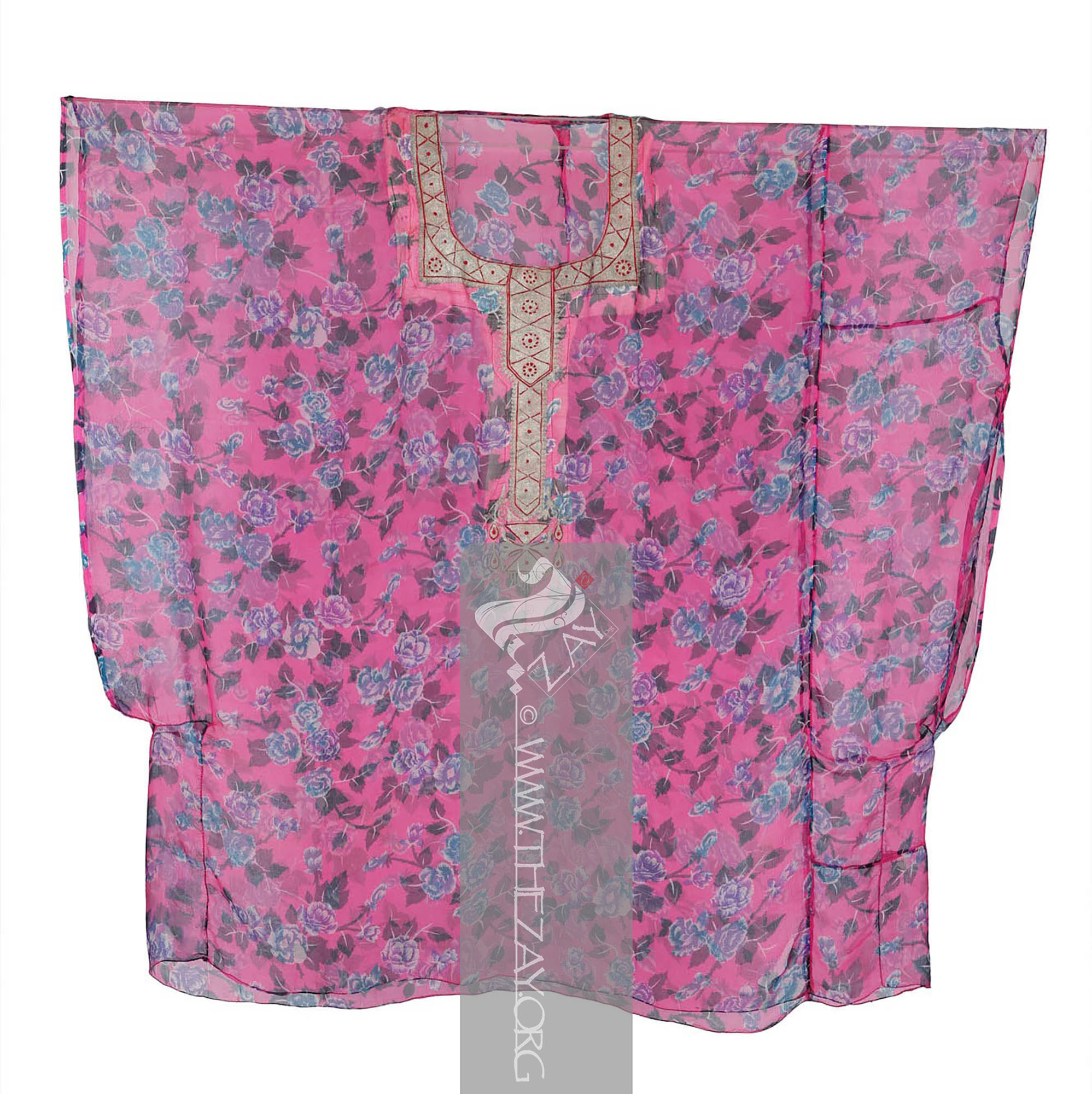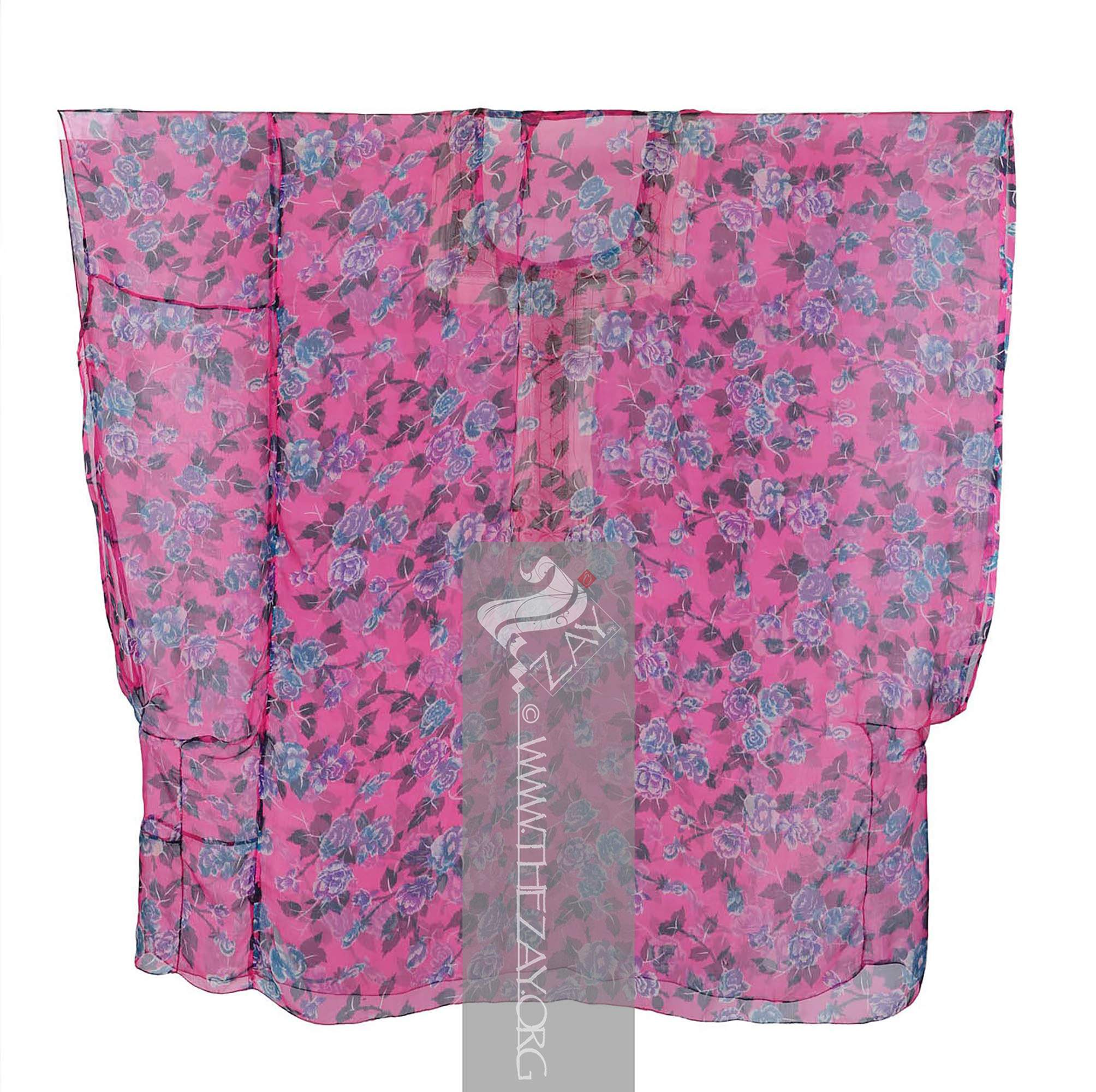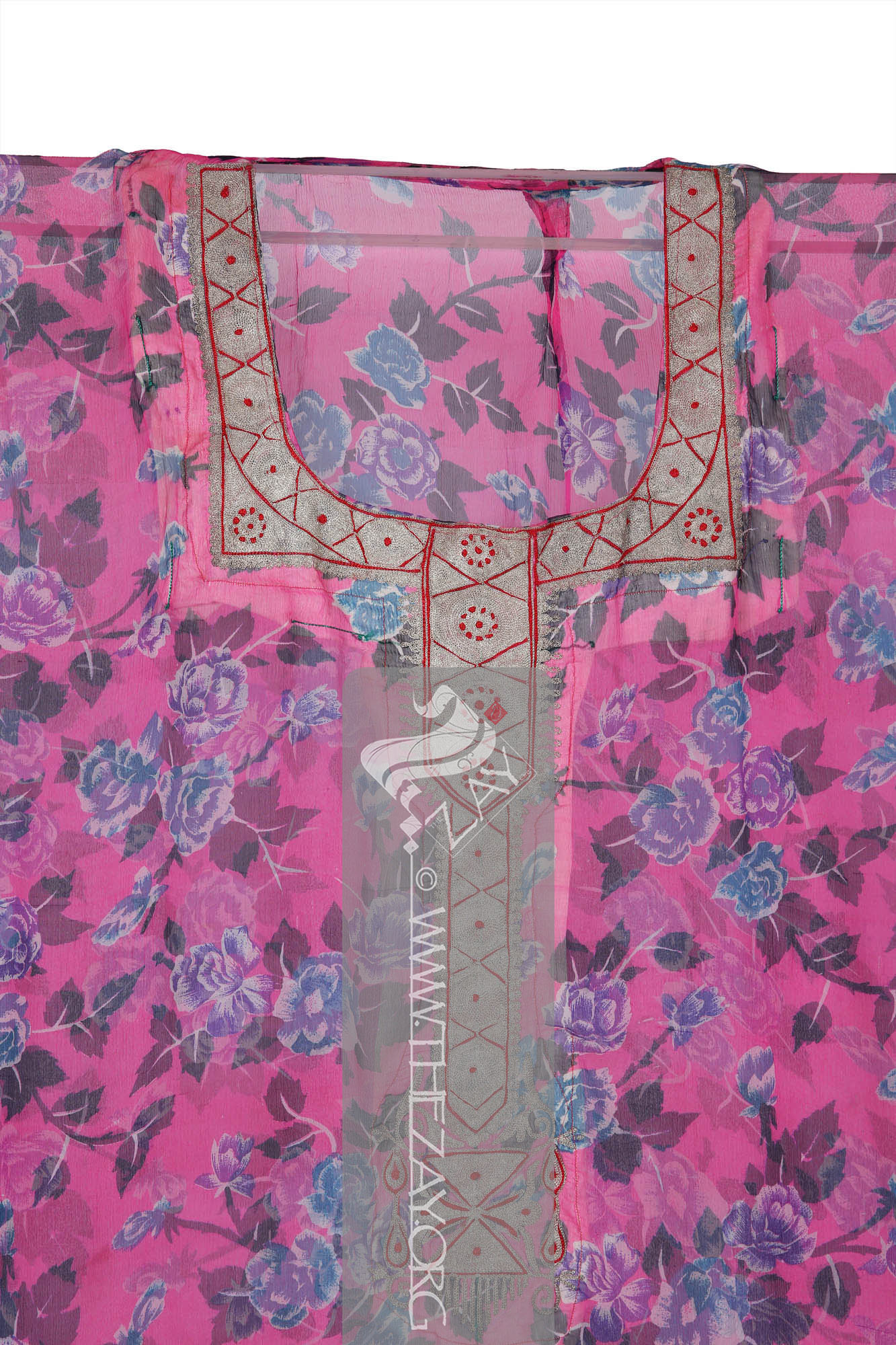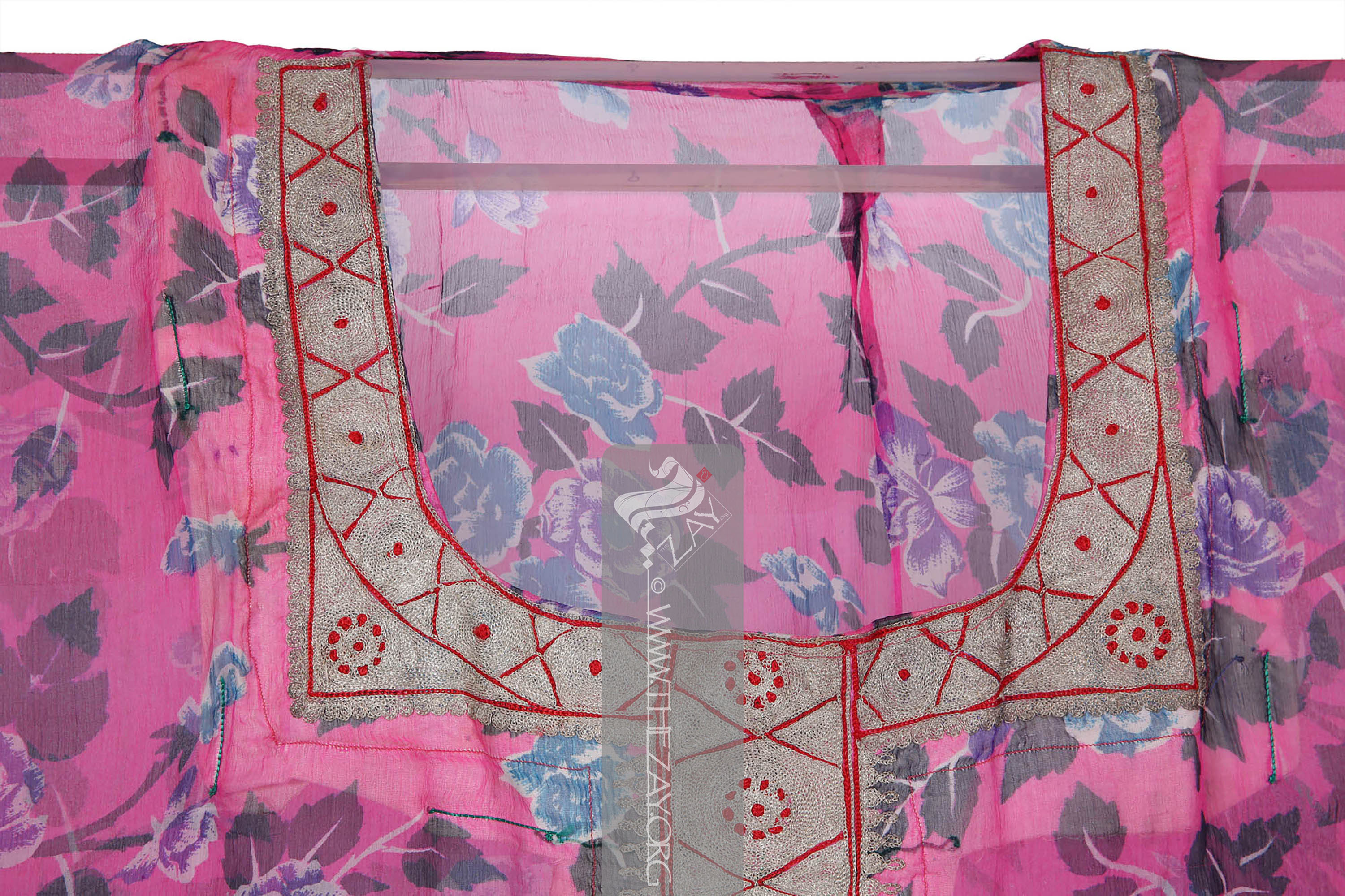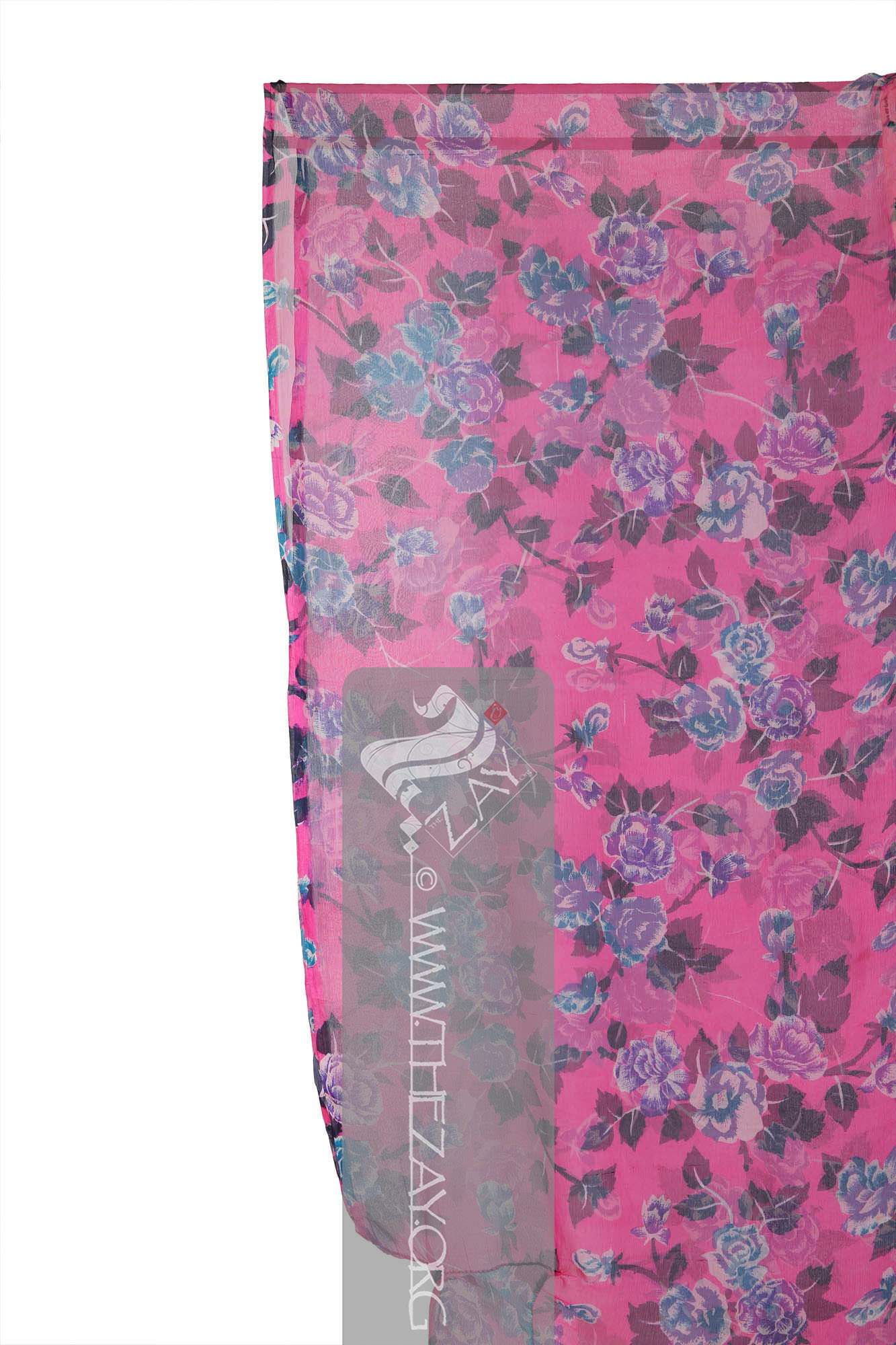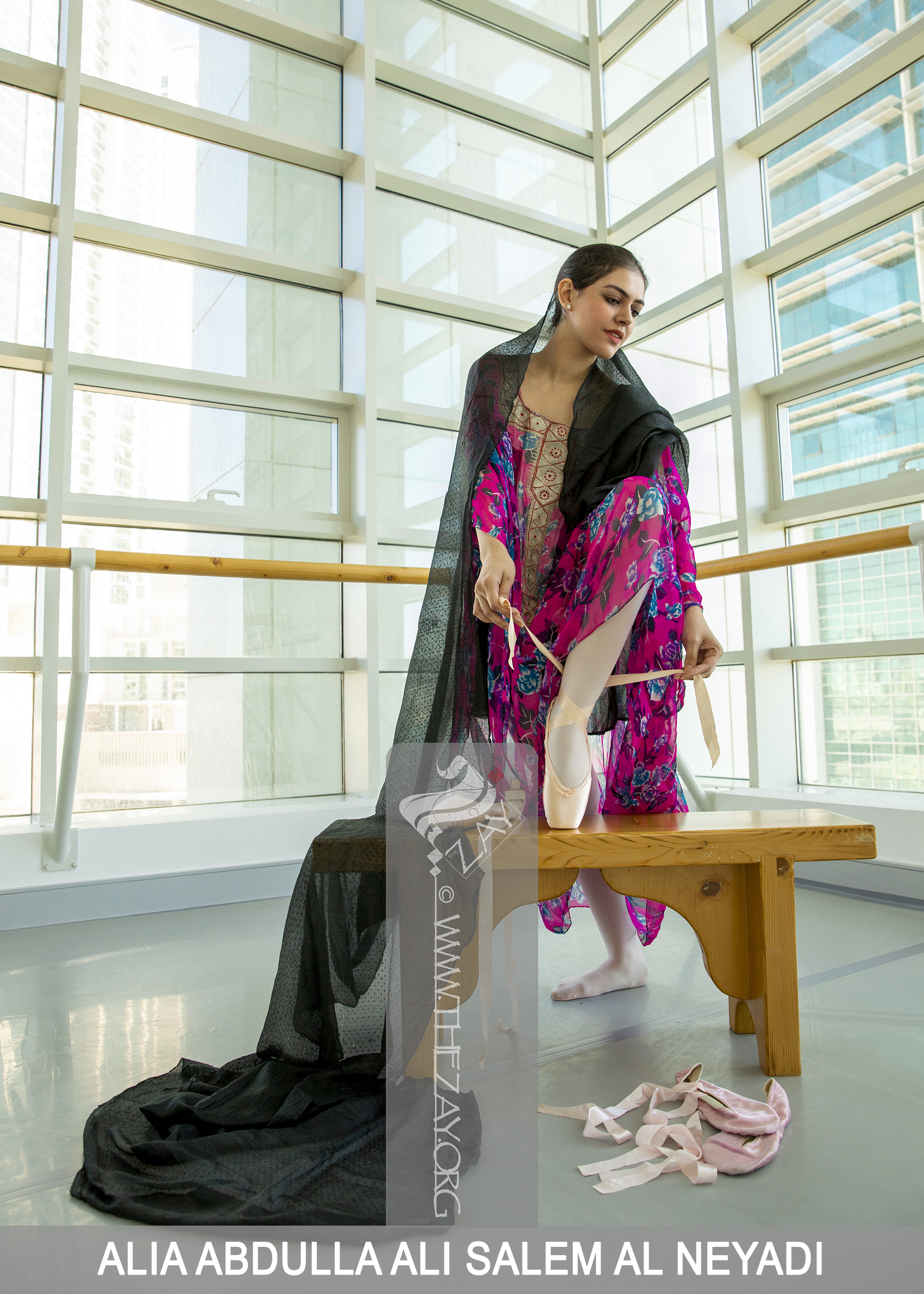Silver embellished overgarment - UAE
| Local Name | Thawb bu_slib khwar_tulah |
| Object Category | Overgarment |
| Gender | Female |
| Date of object | Circa 1972 |
| Place Of orgin | United Arab Emirates |
| Region | Khor Kalba |
| Object Range | UAE |
| Dimensions | Length: 128 cm Width: 131 cm |
| Materials | Silk Metal |
| Technique | Machine Embroidered Machine Stitched |
| Color | |
| Motif | Floral Geometric |
| Provenance | Donated, Moza Abdulla Rashid al Qayidi, Khor Kalba 1972 |
| Location | The Zay
Zay: (Arabic: costume, Pl. azyaā’), a set of clothes in a style typical of a particular country or historical period. Initiative |
| Status | In storage |
| ZI number | ZI2018.500434 UAE |
Object Features
This floral print, sheer silk overgarment (thawb
Thawb: (Arabic: thawb, Pl. Athwāb/thībān), can be pronounced thobe
Thobe: (Arabic: thawb, Pl. Athwāb/thībān), can be pronounced thawb or tobe
Tobe: (Arabic: thawb, Pl. Athwāb/thībān), can be pronounced thawb or thobe based on locale. The standard Arabic word for ‘fabric’ or ‘garment’. It can refer to a qamīs-like tunic worn by men and women in the Arabian Peninsula, Iraq, the southern and south-western ports and islands of Iran, and some countries in East and West Africa. More specifically, it can refer to the square-shaped Bedouin overgarment worn by women. based on locale. The standard Arabic word for ‘fabric’ or ‘garment’. It can also refer to a qamīs-like tunic worn by men and women in the Arabian Peninsula, Iraq, the southern and south-western ports and islands of Iran, and some countries in East and West Africa. More specifically, it can refer to the square-shaped Bedouin overgarment worn by women. or tobe
Tobe: (Arabic: thawb, Pl. Athwāb/thībān), can be pronounced thawb or thobe based on locale. The standard Arabic word for ‘fabric’ or ‘garment’. It can refer to a qamīs-like tunic worn by men and women in the Arabian Peninsula, Iraq, the southern and south-western ports and islands of Iran, and some countries in East and West Africa. More specifically, it can refer to the square-shaped Bedouin overgarment worn by women. based on locale. The standard Arabic word for ‘fabric’ or ‘garment’. It can also refer to a qamīs-like tunic worn by men and women in the Arabian Peninsula, Iraq, the southern and south-western ports and islands of Iran, and some countries in East and West Africa. More specifically, it can refer to the square-shaped Bedouin overgarment worn by women in the Arabian Gulf region. ), has a striking fuchsia (busi
Būṣī: (UAE colloquial), the colour fuschia.) pink base printed in a repetitive branch motif, where one rose is in blue and the other is in purple, with leaves in dark green and the whole is outlined in white.
The overall simple shape is derived by plainly folding a length of fabric and cutting an opening (halj
Ḥalj: (Arabic: ḥalq: mouth, pl: ḥlūj,). Colloquially, the term refers to the neckline opening. The letter (qāf) is turned (jīm) in many Arab dialects.) at the center of the fold to allow the head to pass through, creating the neckline (bidhah
Bidḥah: (Arabic: qata'a or shaqqa: to cut or split). In Emirati dialect, the term refers to the chest area of a garment generally decorated in embroidery or other embellishments.) and the central axis. The two outer edges of the folded fabric are then stitched from the hip line down to the lower hemline, on both sides, creating two large openings for the hands to pass through forming the quintessential wide sleeves (jinan
Jinān: (Colloquial Arab Gulf, synonym: akmām, kmūm, chmūm), wide sleeve panels on overgarments (athwāb). ).
The neckline and central axis are adorned with silver embroidery (khwar_tulah). The embroidery is in simple geometric lines that feature a dense silver base (tulah
Tūlah (Urdu and Sanskrit: tula, and Punjabi: tolaka), a unit of measurement adopted for the main mass of the weights and measurements system in Anglo-India since 1833, although it was used earlier in several regions such as Aden and Zanzibar. The (tula) has no precise weight, it is around 12g and 12.5g. In the colloquial UAE dialect, the word refers to silver.) highlighted in red silk thread (brisam
Brīsam: (Persian: Aabrēšam, Syriac: Aprišum
‘Um: (Arabic: mother), a sign of respect or formality, women are not addressed by their own names, rather as mother of, then adding the name of the eldest son as in Um Mohammed. Also can mean: with, for example (‘um mishakhiṣ) meaning with gold embellishment., English: prism). Generally, refers to the finest form of silk thread. Also pronounced (ibrīsam).) in repeated cross motif called (bu_slib
Bū_slīb: (Arabic, bū: father, slīb: salīb: cross), the term is used colloquially in the UAE to identify overgarments (athwāb) adorned on the neckline (halj) and central axis (bidhah), in cross-shaped red silk thread (brīsam) on a dense base of silver coil machine embroidery (khwār_tūlah). The adornment was highly prized due to its silver content. It was imported, in general, ready-made from India and recycled from one garment to the other (tarchībah). Such athwāb were very popular from the early 1950’s up to the 1970s.), a style very popular in the Emirates from the 1950s to the 1970s.
Light white calico cotton is typically used as lining to enforce the fabric and enable the compact machine embroidery on the relatively sheer fabric, with raw-cut outlines remaining clearly visible from underneath as the gown is worn.
This garment represents a physical example of the traditional Arabic saying (zinah_wa_khazinah
Zīnah_wa_khazīnah: (Arabic: zīnah: beauty, khazīnah: treasury), an Arab saying meaning ‘beauty and wealth in one.’ In nomadic cultures wealth was portable and jewellery and precious garments were made not only as wearable works of art and status but also as a practical method of guarding and securing precious assets by keeping them close to their owners. Similar phrases are common around the Arab world, for example in North African Arab countries such as Libya they say: al hadīd_lil_shadīd.), meaning ‘beauty and wealth in one.’ The silver was employed to demonstrate style and reflect social status, but could also be melted down and sold in times of need.




